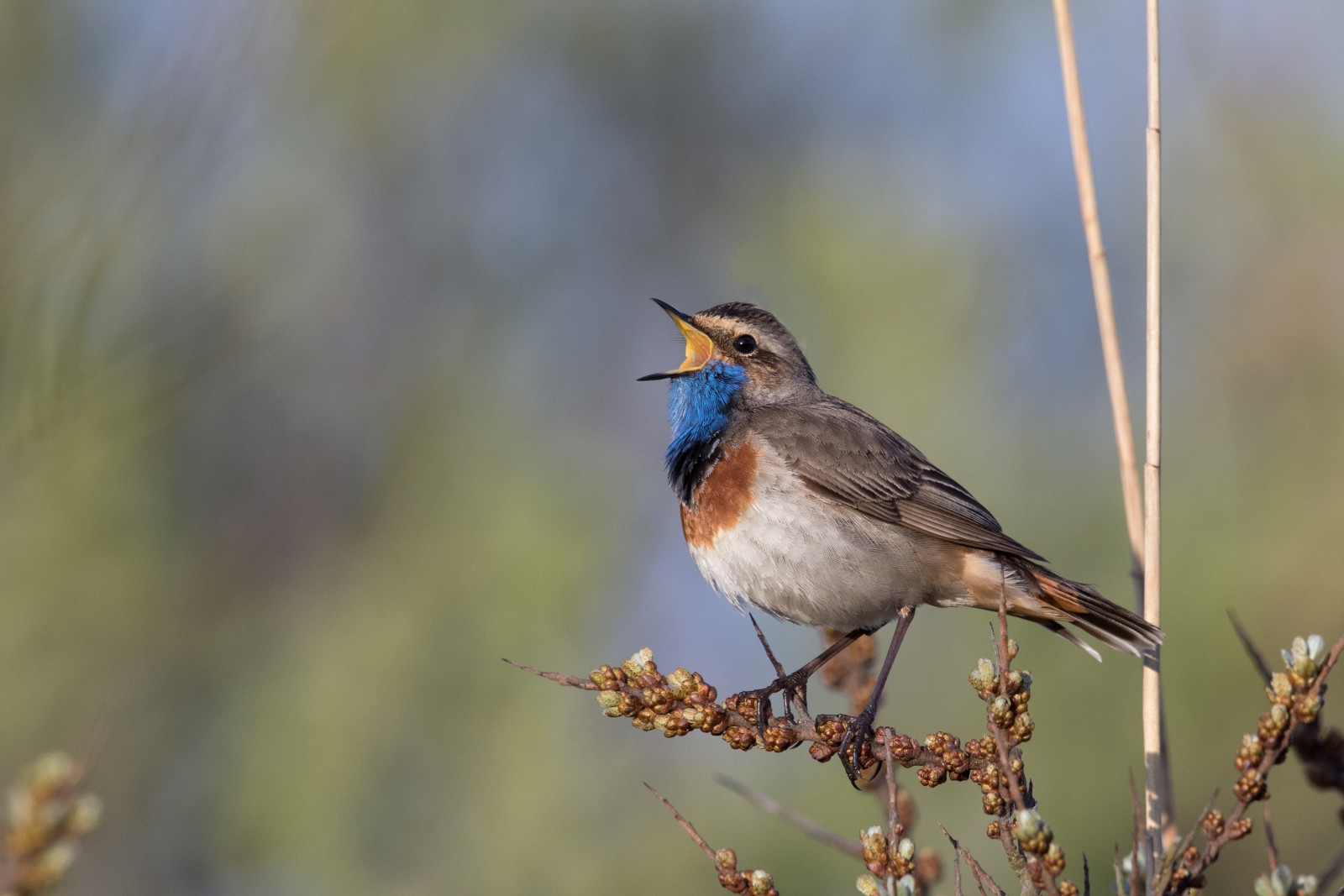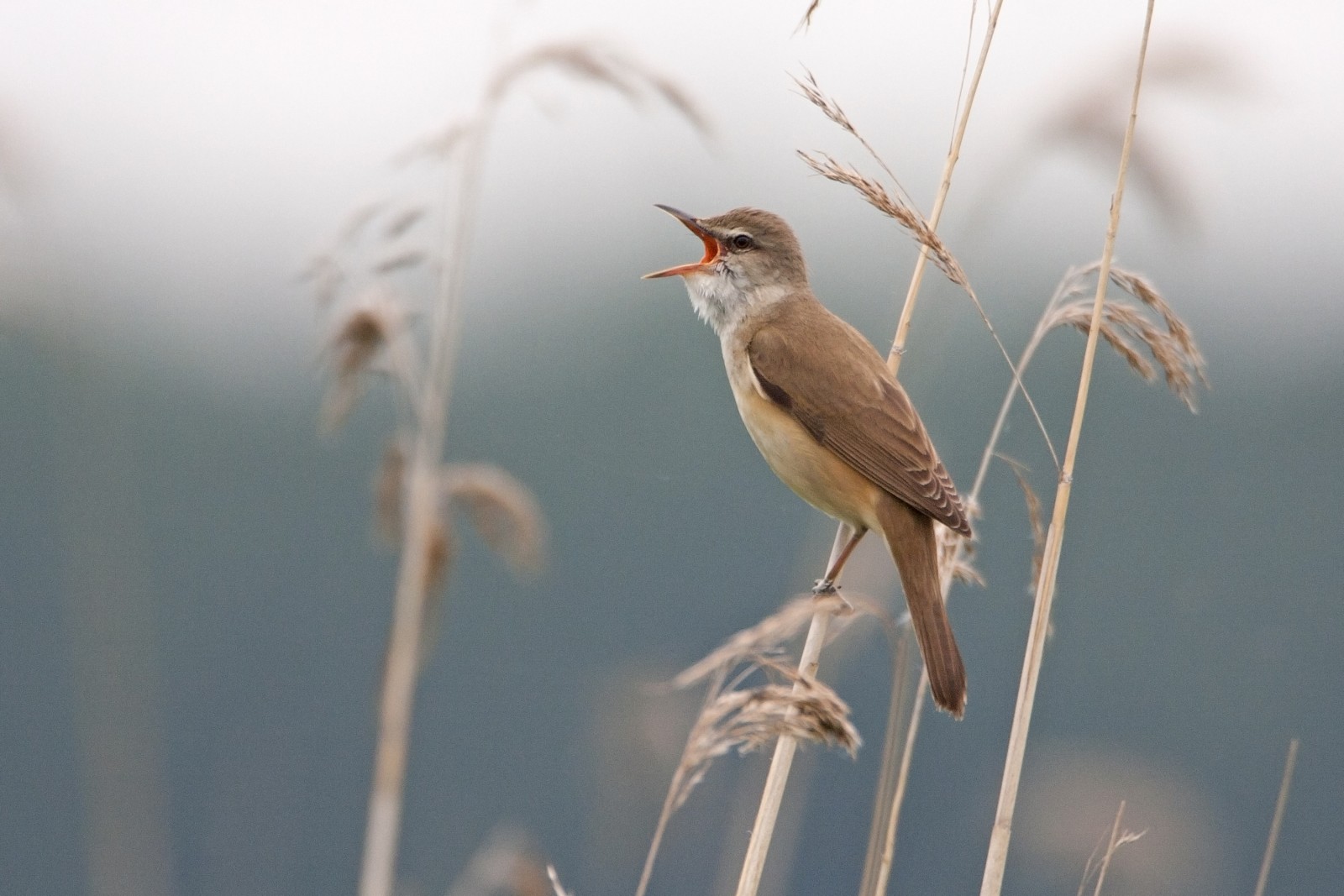Description
The small river Selz has been renaturalised at this reserve and European Beavers have recolonised as well. Along with an area of flooded marshes, reedbeds, ponds, grassland and scattered riverine woodland, some regionally scarce breeders are present and over the years a wide variety of passage and winter birds have been recorded. Over 200 species are now on the reserve list. A concerted effort in Spring on a good day can produce 70 species at the reserve and along the river.
The main attraction for most will be spring and summer reedbed visitors, such as Γαλαζολαίμης, Καλαμοτριλιστής and Καλαμόκιρκος. Τσιχλοποταμίδα has become more regular. Μουστακαλής appears on passage and in some years has stayed to breed. Υφάντρα has bred but nowadays is generally a scarce migrant. There is a Σταχτοτσικνιάς colony and scarcer relatives such as (Κοινός) Νυχτοκόρακας, (Κοινός) Λευκοτσικνιάς, (Ευρωπαϊκός) Μικροτσικνιάς, Πορφυροτσικνιάς and (Ευρασιατικός) Ήταυρος have all been recorded in recent years, some regularly.
Passage waders can be found on the pools or flooded grasslands, but this is heavily dependent on weather and water level conditions. More regular are Δασότρυγγας, Λασπότρυγγας, Ακτίτης and Πρασινοσκέλης. Κοκκινοσκέλης, Λασποσκαλίδρα, Ποταμοσφυριχτής, Αμμοσφυριχτής, Μαχητής and Μαυρότρυγγας are no longer regular but also possible. Local scarcities such as (Ευρωπαϊκή) Λιμόζα, (Ευρωπαϊκή) Αβοκέτα, Σιγλίγουρος, Δρεπανοσκαλίδρα, Σταχτιά Νανοσκαλίδρα and even Κόκκινος Φαλαρόποδας have all been recorded here and along the river. (Ευρωπαϊκό) Βροχοπούλι and Βουνοσφυριχτής have been recorded migrating overhead on occasion.
(Ευρωπαϊκός) Γερανός, Μαύρος Πελαργός and Λευκός Πελαργός are regular visitors, and the latter has started to breed. The woodlands hold good numbers of (Κοινό) Αηδόνι and (Ευρωπαϊκός) Συκοφάγος. Μεσαίος Δρυοκολάπτης has recently colonised the area. In adjacent meadows and scrub Αετομάχος, Μαυρολαίμης, Κιτρινοσουσουράδα and Τσιφτάς can be found on passage and breeding. (Ευρωπαϊκή) Κουκουβάγια and Νανόμπουφος breed, as does Δεντρογέρακο, Ψαλιδιάρης and Τσίφτης.
Wildfowl numbers, mostly dabbing ducks, build up modestly in Spring and Autumn with (Ευρωπαϊκό) Κιρκίρι, Πρασινοκέφαλη Πάπια, and Καπακλής being the most easily encountered. Visibility can be a challenge with reeds obscuring the pools, so try using a scope from higher ground. In most winters, singles or low numbers of wild geese are recorded among the resident groups of Σταχτόχηνα, the most regular being Ασπρομέτωπη Χήνα, followed by Tundra Bean Goose. A Αγριόκυκνος was a recent and unusual overwinterer. (Ευρωπαϊκή) Νεροκελάδα is regular on passage and sometimes winter.
Details
Access
Limited free parking is available at a couple of small paved areas next to the L432 between Hahnheim and Sörgenloch. This road is also on a bus-route (652) with the nearest bus-stop at Wahlheimer Hof to the east of the reserve, or alternatively at Sörgenloch to the west. A path, paved only on most of the southern side, circumvents the pools, grassland, and reedbeds. Cycling this part of the southern edge is possible, but other stretches are often high grass (beware of ticks) and can be muddy depending on conditions. An official paved cycling route veers west of the reserve when at the south-western corner but returns to the Selz shortly afterwards. Beaver activity and excessive rain sometimes causes extensive localised flooding.



